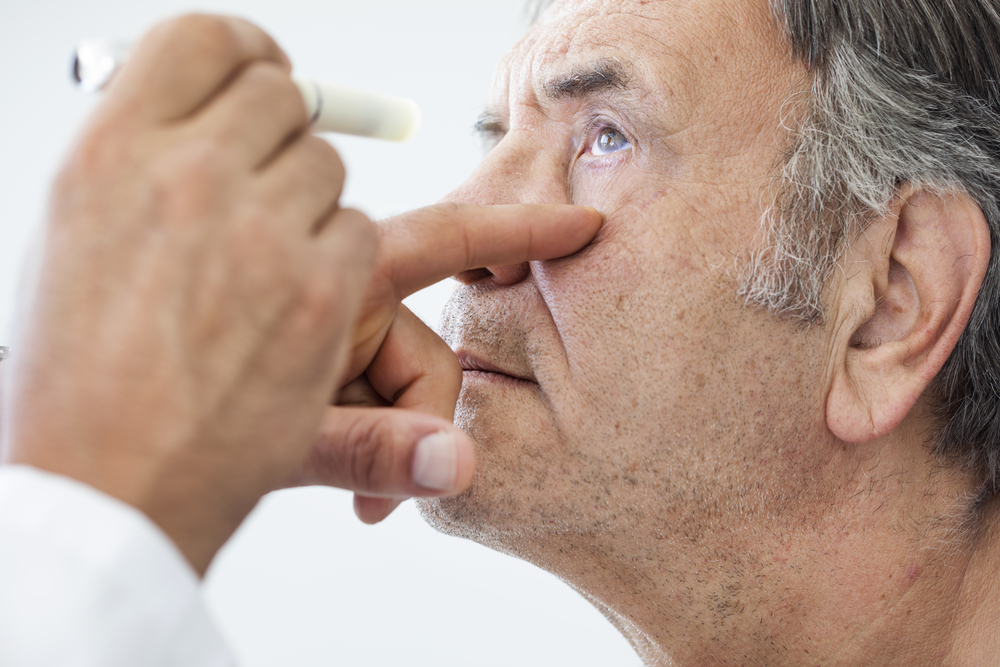
Dry eyes can affect anyone but are particularly common among older adults. The condition can be chronic or temporary and can occur due to various reasons, including environmental conditions or specific medical conditions. Without proper lubrication, eyes can become inflamed and irritated, leading to a host of complications if left untreated.
Understanding dry eyes is the first step towards effective management. This condition goes beyond merely causing discomfort – it can dramatically alter your ability to carry out everyday tasks, from reading to driving. Hence, diagnosing dry eyes promptly and accurately is crucial.
Symptoms of Dry Eye
Dry eyes manifest in several ways, and the symptoms can range from mild to severe. The most common symptom is a stinging or burning sensation in the eyes. Some people with dry eyes also experience a sandy or gritty feeling as if something is in their eyes. Other symptoms include redness, pain, and a heavy eyelid feeling.
In some cases, dry eyes can cause blurred vision or damage to the surface of the eyes. Ironically, dry eyes can also lead to watery eyes. This is because dryness on the eye's surface may overstimulate the production of the watery component of your tears as a protective mechanism.
Consequently, understanding these symptoms is essential. If you're experiencing any of the above symptoms, it's vital to seek medical attention to prevent further complications. Remember, early diagnosis is key in managing any medical condition, including dry eyes.
Causes of Dry Eyes
There are several causes of dry eyes, and understanding them can help in diagnosing the condition accurately. Tears are a complex mixture of water, fatty oils, and mucus. This mixture helps make the surface of your eyes clear and smooth, and it helps protect your eyes from infection. For some people, the cause of dry eyes is decreased tear production. For others, it's increased tear evaporation or an imbalance in the makeup of your tears.
Certain factors can increase your risk of getting dry eyes. These include being over the age of 50, being a woman (due to hormonal changes), eating a diet that is low in vitamin A or omega-3 fatty acids, wearing contact lenses, and looking at computer screens for long periods without blinking.
It's also worth noting that certain medical conditions can cause dry eyes. These include diabetes, rheumatoid arthritis, lupus, scleroderma, Sjogren's syndrome, thyroid disorders, and vitamin A deficiency.
The Process of Diagnosing Dry Eye
Diagnosing dry eye starts with a comprehensive examination. This involves understanding the patient's health history and specific symptoms. The eye care professional will ask about general health, use of glasses or contact lenses, medications, work environment, and any family history of eye problems.
Specific to diagnosing dry eye, they will inquire about the frequency and duration of their symptoms, their tolerance to low humidity or windy conditions, any history of allergies, and any previous attempts to treat dry eyes. These questions help start painting a picture of the potential causes of the dry eyes.
Following the initial assessment, they will conduct a thorough eye examination. This includes an external examination of the eyes, including the lids, and the blink dynamics. They also perform an examination of the cornea using a slit lamp microscope. This examination allows me to look for any telltale signs of dry eyes, such as redness, thickened lid margins, or a less smooth cornea.
Tests for Diagnosing Dry Eye
There are several tests for diagnosing dry eye. The Schirmer test measures the volume of your tear production. The test involves placing a strip of blotting paper under your lower eyelid. After five minutes, they measure the amount of the strip soaked by your tears.
Another test is the tear breakup time. This test measures the stability of your tear film. They place a drop of dye in your eye that allows me to observe your tear film. If the tear film breaks up too quickly, it may suggest you have dry eyes.
They may also perform a dye disappearance test. After placing a drop of dye in the corner of your eye, they will observe how long it takes for the dye to disappear. If the dye disappears quickly, it could indicate that your tears are not spreading evenly across your eye.
Understanding the Results of Dry Eye Diagnosis
After conducting these tests and examinations, the eye care professional can then make a diagnosis. If you have dry eyes, he or she will discuss the severity of your condition and the best treatment options to manage your symptoms and protect your eyes.
Some patients may have mild dry eyes, which can be easily managed with lifestyle changes or over-the-counter eye drops. Others may have chronic dry eyes, requiring more complex treatment protocols, including prescription medications or specific procedures.
Understanding the results of your dry eye diagnosis is crucial for managing the condition moving forward. It's essential to maintain an open line of communication with your eye care professional throughout the diagnosis and treatment process to ensure the best possible outcome.
Conclusion
Diagnosing dry eye is a comprehensive process that involves understanding your symptoms, conducting thorough examinations, and performing specific tests. With the right diagnosis and treatment, you can manage your symptoms and protect your eyes.
If you're experiencing signs of dry eyes, visit Alamo Eye Care at our San Antonio or Austin, Texas, office. Call or text (210) 403-9050 to schedule an appointment today.







